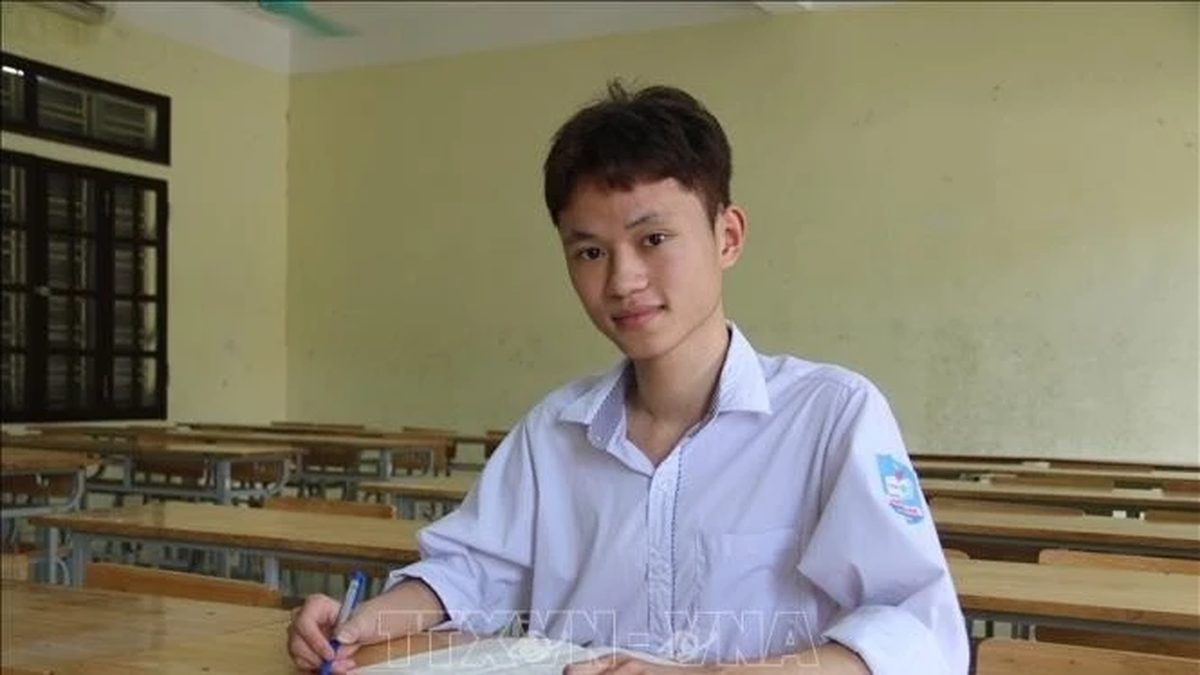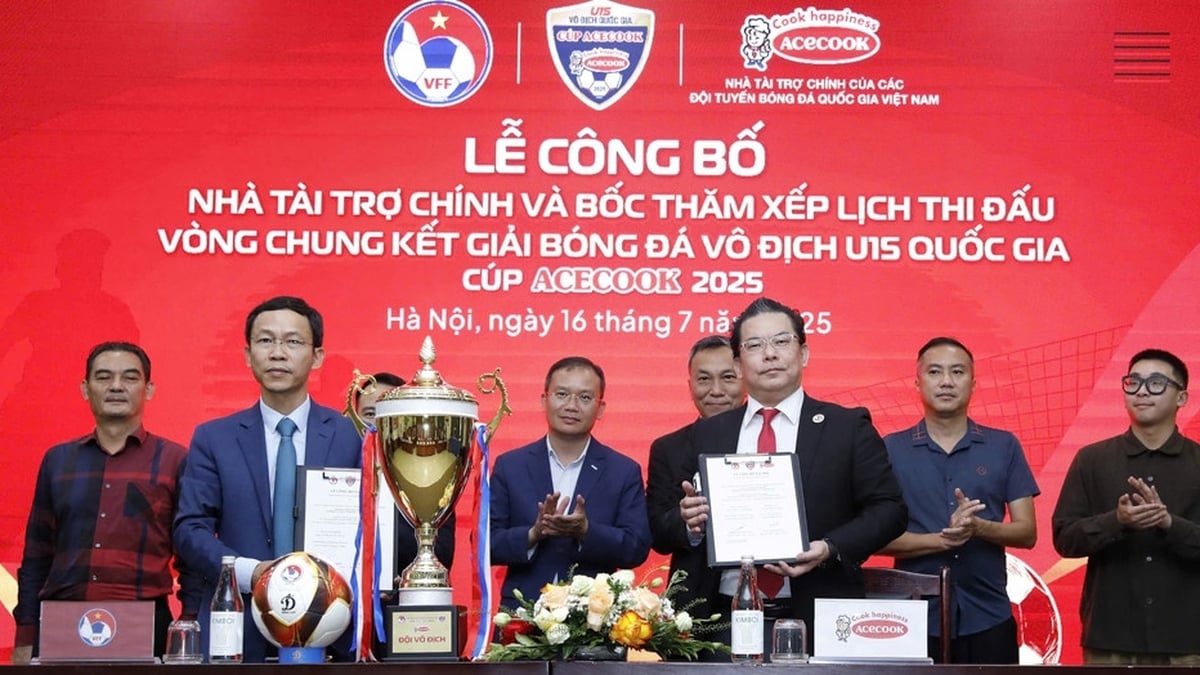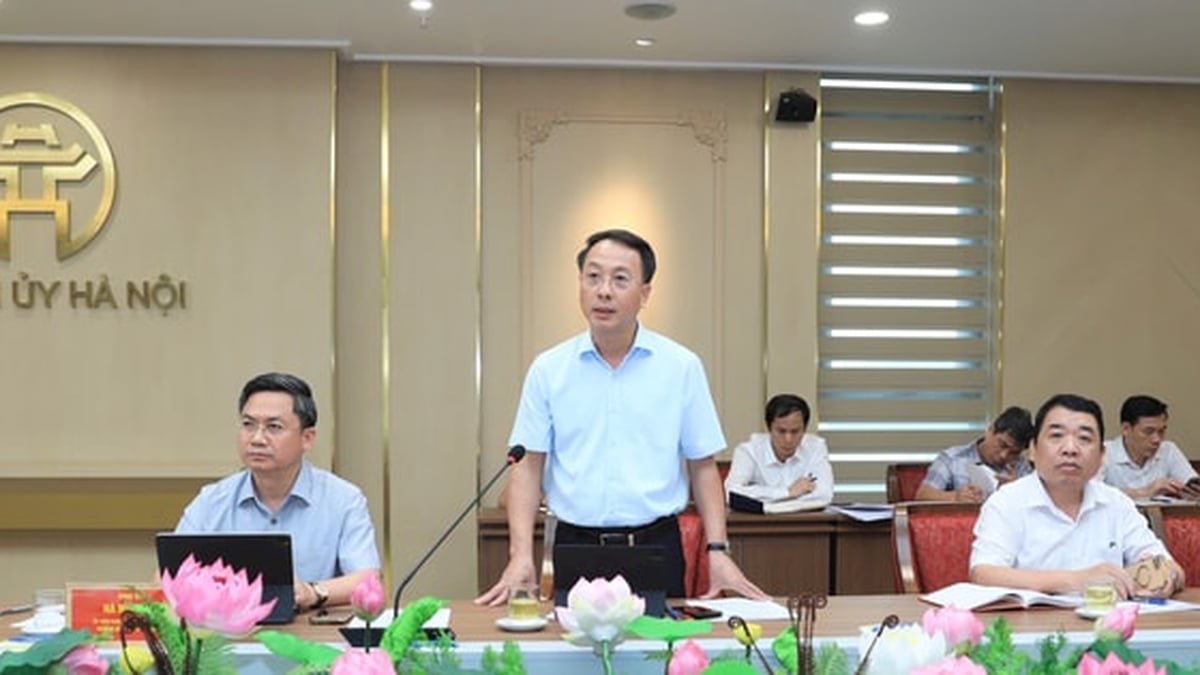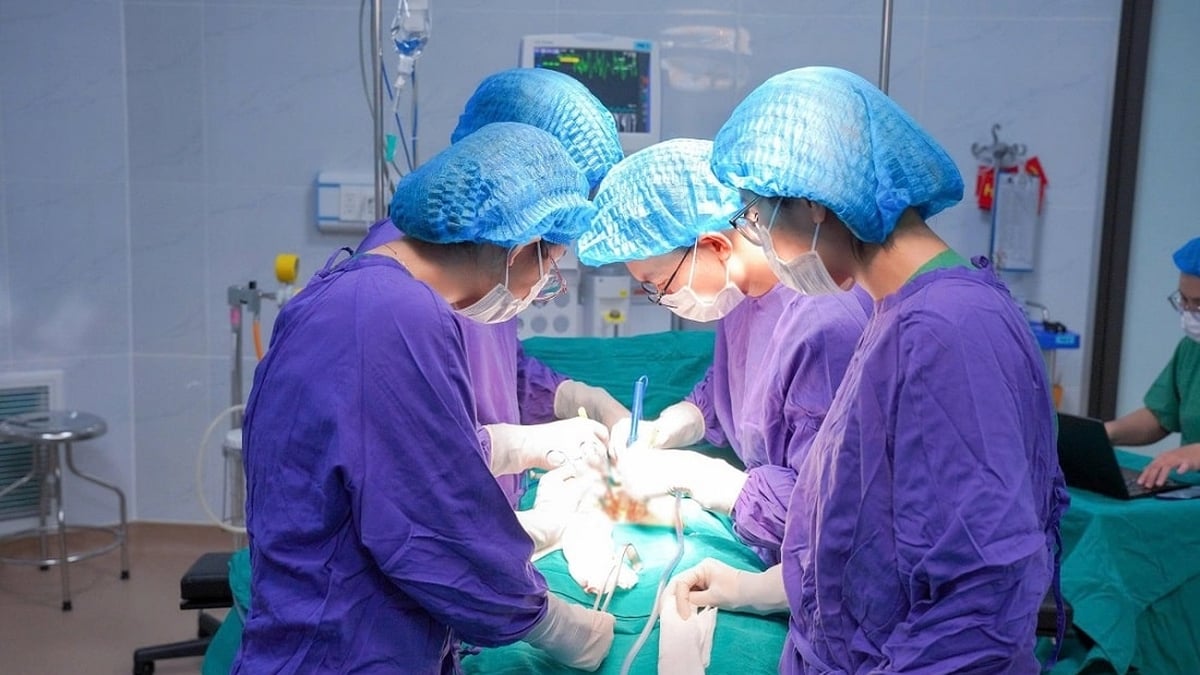Prime Minister Pham Minh Chinh requested that human resource development for the semiconductor industry be considered a breakthrough in human resource training and that investment be made to match this breakthrough.
 |
| Prime Minister Pham Minh Chinh chaired and delivered a speech at the Conference on human resource development for the semiconductor industry. Photo: VNA |
On the afternoon of April 24, at the Government Headquarters, Prime Minister Pham Minh Chinh chaired a conference on human resource development for the semiconductor industry.
Also attending the conference were Deputy Prime Minister Tran Hong Ha; Ministers, Heads of ministerial-level agencies, Government agencies; Chairmen of People's Committees of several provinces and centrally-run cities; leaders of training institutions, business associations, and leading domestic and international technology corporations in Vietnam.
Opening the Conference, Prime Minister Pham Minh Chinh said that digital transformation is an objective requirement, a strategic choice, and a top priority for the development of every country and Vietnam. In particular, the semiconductor industry plays an important role in digital transformation; it is the foundation of three revolutionary transformations: digital transformation, green transformation, and smart transformation.
The semiconductor industry is developing in a number of countries. However, due to the complicated global situation, there is a shortage of semiconductor chips and a trend of shifting the semiconductor production and supply chain, in which Vietnam is identified as one of the few countries that is receiving attention. This is both an opportunity and a challenge for Vietnam. In addition to the advantages, Vietnam must meet other conditions such as hard and soft infrastructure, especially human resources to serve the development of the semiconductor industry...
The Prime Minister said that in response to the above requirements, the Government and ministries and branches have proactively implemented tasks to take advantage of the trend, including the development of a project to train 50,000 semiconductor engineers. The Prime Minister requested delegates attending the Conference to focus on discussing tasks and solutions to achieve the above goals in the shortest time. In particular, taking into account the existing foundations of training institutions; teaching staff; IT and electronics human resources... to provide additional training in semiconductor technology; at the same time, forming faculties, institutes, and specialized research rooms in the field of semiconductor technology; clearly defining the tasks of the Government, ministries, branches, localities, training institutions, enterprises... to jointly create breakthroughs in implementation and achieve the set goals.
Prime Minister Pham Minh Chinh requested that human resource development for the semiconductor industry be considered a breakthrough in human resource training and that investment be made to match this breakthrough.
Prime Minister Pham Minh Chinh highly appreciated the frank, enthusiastic, responsible, practical and feasible opinions of the delegates; emphasizing that developing the semiconductor industry is the country's strategic choice.
According to the Prime Minister, to develop the semiconductor industry, five pillars are needed, including the pillar of human resources. The Party and State have had many policies and guidelines on comprehensive development of human resources, science, technology, and innovation, which are being effectively implemented.
In particular, Conclusion No. 64-KL/TW dated October 18, 2023 of the 8th Conference of the 13th Central Executive Committee requested "Focus on training 50,000 - 100,000 high-quality human resources for the semiconductor chip manufacturing industry by 2025 and 2030".
The Prime Minister has issued the Strategy for Science, Technology and Innovation Development to 2030, identifying the semiconductor industry as a high-tech, priority industry. The Government assigned relevant ministries and sectors to coordinate in developing a Project on Human Resources Development for the Semiconductor Industry to 2030; and to develop a Strategy for the Development of the Vietnamese Semiconductor Industry to 2030.
Vietnam has established the National Innovation Center (NIC) and many concentrated IT parks are operating, expected to be the nucleus to promote innovation, creativity and development of the semiconductor industry; many IT enterprises are planning to develop in this field, can coordinate and support in training human resources as well as use the human resources of these enterprises.
Notably, currently, our country has about 240 universities, of which nearly 160 have technical training majors, capable of converting to train semiconductor human resources; there are 35 training institutions currently training majors related to the semiconductor industry.
Over the past 20 years, Vietnam has trained hundreds of thousands of programmers and millions of IT workers, which is an important foundation to affirm the ability to train 50,000 - 100,000 semiconductor workers by 2030.
The Prime Minister said that Vietnam has signed a Memorandum of Understanding on cooperation between Vietnam and the United States on developing the semiconductor industry ecosystem, emphasizing cooperation in developing human resources for the industry. Leading corporations (NVIDIA, Samsung, etc.) are also interested in and oriented towards research, investment, development, and building a semiconductor manufacturing base in Vietnam.
“This is an important premise and a favorable opportunity for Vietnam to grasp and participate in the semiconductor industry through developing high-quality semiconductor human resources, to reap benefits from the semiconductor industry,” the Prime Minister emphasized.
Striving to train 50,000 - 100,000 human resources for the semiconductor industry
Pointing out a number of difficulties and challenges in terms of awareness, human resources, finance, protection policies, competitiveness and national security, etc., to achieve the goal of training 50,000 - 100,000 human resources to serve the semiconductor industry, Prime Minister Pham Minh Chinh requested ministries, branches, localities, training institutions and enterprises to consider human resource development for the semiconductor industry as a breakthrough in human resource training and to invest appropriately for this breakthrough; diversify training types; diversify resources, promote public-private partnership for human resource development for the semiconductor industry.
Regarding the key tasks and solutions in the coming time, the Prime Minister directed to urgently build and perfect institutions and specific policies with incentives for training human resources for the semiconductor industry; invest in infrastructure for training semiconductor human resources; train a team of teachers, lecturers and appropriate curriculum; have methods to develop semiconductor industry human resources that are asymptotic and breakthrough in both the short and long term.
Requesting ministries, branches, localities, and units, based on their functions, tasks, and powers, to develop specific programs and plans and closely coordinate with each other to develop human resources to serve the semiconductor industry. The Prime Minister assigns tasks to each ministry, branch, and locality.
In particular, the Ministry of Planning and Investment reviews, completes, and submits to the Prime Minister for approval the Program "Developing human resources for the semiconductor industry to 2030, with a vision to 2045" in May 2024; coordinates with localities with foreign investment in the semiconductor industry to mobilize international funding to build labs in some cities or universities; builds semiconductor city models and semiconductor industrial parks; attracts foreign investment to develop the semiconductor microchip industry, connecting the Vietnamese semiconductor industry ecosystem with the world.
The Ministry of Information and Communications urgently submits to the Prime Minister for approval the Strategy for the development of Vietnam's semiconductor industry to 2030, with a vision to 2035; closely coordinates with the Ministry of Planning and Investment to implement the contents of the Project to ensure adherence to the Strategy's objectives.
The Ministry of Information and Communications urgently submits to the Prime Minister for approval the Strategy for the development of Vietnam's semiconductor industry to 2030, with a vision to 2035; closely coordinates with the Ministry of Planning and Investment to implement the contents of the Project to ensure adherence to the goals of the Strategy.
The Ministry of Education and Training develops a plan to train 30,000 university students to serve the semiconductor chip industry in a 5-year period; develops transition training programs for graduates of related majors to the semiconductor industry; presides over and coordinates with the Ministry of Labor, War Invalids and Social Affairs to study and organize advanced/inter-level training for college engineers in related majors to university engineers in the semiconductor industry.
The Ministry of Science and Technology promotes research and technology transfer to enterprises in the semiconductor chip sector; directs and guides the implementation of scientific and technological tasks in the semiconductor industry; approves the list and balances the budget for implementing national-level scientific and technological tasks in the semiconductor industry.
The Ministry of Finance studies and proposes to competent authorities to amend the mechanism for using the state budget to implement the Project quickly and conveniently; reviews and evaluates all tax laws to report to competent authorities for consideration of amending and supplementing tax incentive policies, ensuring compliance with Vietnam's conditions as well as international practices and the consistency of the tax policy system to encourage and develop the semiconductor industry.
People's Committees of provinces and centrally run cities review, research, and arrange budget sources to support scholarships for local students studying semiconductors; closely coordinate with local semiconductor enterprises to support specific training; coordinate to build models of semiconductor cities and semiconductor industrial parks.
For universities and vocational training institutions, the Prime Minister requested to develop a 5-year roadmap plan, prioritizing budget allocation from legal revenue sources to implement training according to set goals; closely cooperate to improve training efficiency, develop human resources for the semiconductor industry; and promote international cooperation in training.
For businesses and investors, it is necessary to actively participate in building the semiconductor human resource market; closely coordinate with localities and training institutions on training needs and develop training programs; accompany and supplement resources with the State to support the development of semiconductor human resources.
The Prime Minister believes that with the participation of the entire political system, the support and participation of people, businesses, investors, the support of international friends, and with specific, methodical, scientific, drastic, focused and key actions, Vietnam will complete the goal of training 550,000 - 100,000 human resources for the semiconductor industry by 2030.
 |
| Prime Minister Pham Minh Chinh chaired and delivered a speech at the Conference on human resource development for the semiconductor industry. Photo: VNA |
Vietnam has advantages to welcome the shift of semiconductor industry
The conference noted that the semiconductor industry is the core of the electronics industry. From 2001 to 2021, the global semiconductor industry grew 14% annually, reaching nearly $600 billion in revenue by 2023. The semiconductor industry is expected to continue to grow strongly, reaching $1,000 billion by 2030.
In the trend of diversifying supply chains and complex geopolitical developments in the world, semiconductor industry enterprises have been shifting to Asian countries to set up headquarters and factories. Vietnam has some key advantages to affirm that it is ready for the semiconductor industry such as: high political determination; favorable investment and business environment; quality workforce; comprehensive strategic partnerships with most countries with developed semiconductor industries.
With the above context and advantages, Vietnam has a great opportunity to participate in the global semiconductor industry value chain. To grasp and realize this opportunity, Vietnam needs to quickly deploy within no more than 24 months and focus on 3 core contents: perfecting specific mechanisms and policies to ensure competition with countries in the region; synchronizing infrastructure of electricity, water, transportation, fiber optic cables, information technology; developing high-quality human resources for the industry.
To develop high-quality human resources for the semiconductor industry in a short time, delegates said that we should take advantage of the existing foundation of training facilities; teaching staff; information technology and electronics human resources... to provide additional training in semiconductor technology; at the same time, form centers, faculties, institutes, and specialized research rooms in the field of semiconductor technology.
Delegates also proposed training and human resource attraction policies for the semiconductor industry; development of supporting industries for the semiconductor industry; tasks of the Government, ministries, sectors, localities, training institutions, enterprises, etc. to create a breakthrough in developing human resources for the semiconductor industry. Delegates said that with high determination, Vietnam can meet the human resource requirements for the semiconductor industry./.
According to the Communist Party of Vietnam
Source




















































![[Maritime News] More than 80% of global container shipping capacity is in the hands of MSC and major shipping alliances](https://vphoto.vietnam.vn/thumb/402x226/vietnam/resource/IMAGE/2025/7/16/6b4d586c984b4cbf8c5680352b9eaeb0)












































Comment (0)